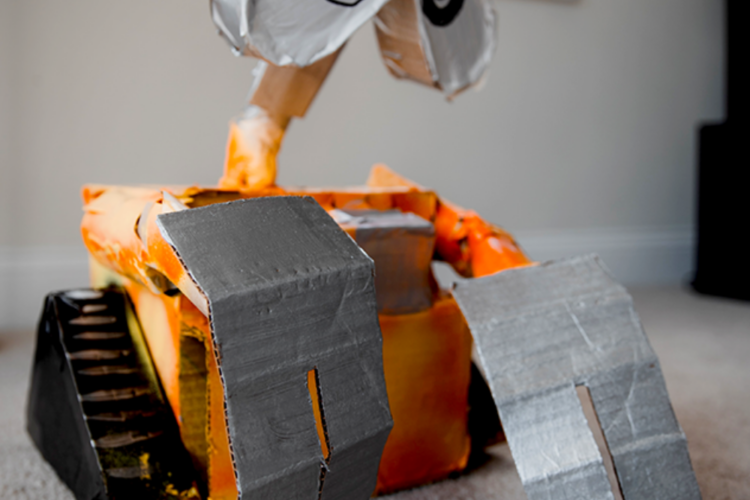
I. Understanding Upcycled Items: What They Are and Their Benefits
II. Legal Considerations for Selling Upcycled Products
III. Effective Marketing Strategies for Upcycled Items
Understanding Upcycled Items: What They Are and Their Benefits
Have you ever looked at an old item and thought, “There’s got to be a better use for this”? That’s the beauty of upcycling! Upcycled items are those creatively transformed products that breathe new life into materials that would otherwise end up in a landfill. Let’s dive into what upcycling is all about and why it might just be your new favorite way to shop and create!
What Does Upcycling Mean?
At its core, upcycling is about taking something that has outlived its original purpose and turning it into something new and useful. Unlike recycling, which breaks down materials to create something entirely different, upcycling keeps the original item mostly intact while enhancing its value and functionality.
Examples of Upcycled Items
- Furniture: Old wooden pallets can be transformed into stunning coffee tables or garden benches.
- Fashion: Discarded jeans might become a stylish handbag or a chic pair of shorts.
- Home Décor: Glass jars can be repurposed as beautiful candle holders or storage containers.
The Benefits of Upcycling
So why should you care about upcycled items? Here are some compelling reasons to consider:
- Environmental Impact: Upcycling reduces waste and minimizes the amount of new materials needed. Every upcycled item means one less thing in the landfill!
- Creativity and Customization: Upcycled products often have a unique flair that mass-produced items lack. When you choose upcycled, you’re opting for individuality and a story behind each piece.
- Cost-effective: Sometimes, upcycled items are more affordable than brand new products. You can save money while still getting fabulous and functional items!
- Support for Local Artisans: Many upcycled items are crafted by local artists and makers, which means your purchase supports small businesses and promotes local economies.
Conclusion
In a world where consumerism often rules, upcycling offers a refreshing alternative. Whether you’re looking to reduce your carbon footprint, find unique items that showcase your personality, or simply grab a good deal, upcycled products have something for everyone. So, next time you come across something old and seemingly useless, think twice—maybe it just needs a little creativity and love to become something fantastic!
Legal Considerations for Selling Upcycled Products
So, you’ve turned your creativity into a business by upcycling items. That’s fantastic! However, before you get too caught up in the excitement of selling your unique creations, it’s important to navigate the legal landscape. Let’s dive into some essential legal considerations that will keep your upcycled products on the right side of the law.
1. Understanding Intellectual Property
Your designs are a product of your ingenuity, and it’s crucial to protect that! Here’s what you need to know:
- Copyright: If your upcycled product features original artwork or designs, you may have copyright protection. This means no one else can legally copy your unique designs.
- Trademarks: If you’ve created a brand name or logo, consider trademarking it. This helps protect your brand identity and prevents others from using a similar name or logo.
2. Safety Regulations
In many cases, upcycled items can pose safety concerns, especially if they are toys or clothing. Here’s what to keep in mind:
- Compliance with Safety Standards: Research the safety requirements specific to your products. For instance, children’s toys might need to meet specific guidelines to ensure they’re safe for use.
- Labeling: Make sure your products are correctly labeled. This includes ingredients, warnings, or care instructions, depending on what you’re selling.
3. Licensing and Permits
Depending on your location, you may need specific licenses or permits to operate your upcycling business legally. Here’s how to get started:
- Business License: Check with your local government about obtaining a business license. Even if you’re operating from home, having the proper licensing is crucial.
- Sales Tax Permit: If you plan to sell your products online or in person, you may need a sales tax permit. This allows you to collect sales tax from customers legally.
4. Consumer Protection Laws
As a seller, you are responsible for ensuring that your customers are satisfied with their purchases. Here are a few tips:
- Clear Return Policy: Establish a clear return policy that outlines the process for customers who wish to return or exchange products. This builds trust!
- Accurate Product Descriptions: Make sure to accurately describe your products to avoid any misrepresentation. Transparency is key to maintaining a good relationship with your customers.
5. Insurance
Lastly, consider obtaining insurance for your upcycling business. Even if you’re just starting out, having insurance can protect you from potential liabilities. Here’s what to think about:
- General Liability Insurance: This can help cover legal fees and damages in case of a lawsuit.
- Product Liability Insurance: If your product causes harm or injury, this coverage can protect you from significant financial loss.
Remember, while the world of upcycling can be incredibly rewarding, it’s essential to approach it with a solid understanding of the legal landscape. Taking care of these considerations not only protects you but also helps in building a brand that your customers can trust. Now, go ahead and unleash your creativity, knowing you’re on solid legal ground!
Effective Marketing Strategies for Upcycled Items
So, you’ve got some amazing upcycled products ready to hit the market. Now, how do you make sure they get the attention they deserve? Marketing upcycled items can be a bit different from traditional products, but it’s also a fantastic opportunity to share a story and connect with eco-conscious consumers. Let’s dive into some effective strategies that will help your upcycled treasures shine!
1. Tell Your Story
One of the most powerful marketing tools you have is your unique story. Consumers love to know where their products come from, especially when it involves sustainability. Share the journey of your upcycled items:
- Origin: Explain what materials you used and how they were transformed.
- Inspiration: Describe what inspired you to create these items.
- Benefits: Highlight how buying your products contributes to environmental sustainability.
Use your website, social media, and product listings to weave this narrative, making your audience feel connected to your brand.
2. Leverage Social Media
Social media platforms are an excellent way to showcase your upcycled items. Here are some tips to maximize your reach:
- Visual Content: Create eye-catching images and videos that highlight your products. Bright, engaging visuals can attract attention and encourage shares.
- Hashtags: Use relevant hashtags like #upcycled, #sustainableliving, and #ecofriendly to reach a broader audience.
- Engagement: Don’t just post; engage! Ask questions, respond to comments, and create polls to get your audience involved.
Remember, consistency is key. Regularly update your social media with new content to keep your audience engaged and informed.
3. Collaborate with Influencers
Teaming up with eco-conscious influencers can greatly expand your reach. Look for influencers who align with your brand values and have an audience that appreciates sustainability. Here’s what to do:
- Send Samples: Offer them samples of your upcycled items to try out and review.
- Co-create Content: Work together on social media posts or videos showcasing your products in action.
- Host Giveaways: Collaborate on a giveaway to generate buzz and attract new followers.
This partnership can introduce your brand to new potential customers in a genuine and organic way.
4. Optimize Your Online Store
If you’re selling online, make sure your store is inviting and informative:
- High-Quality Images: Use multiple angles of your products and close-ups to showcase the craftsmanship.
- Detailed Descriptions: Provide thorough descriptions that emphasize the sustainability aspect and unique features of each item.
- SEO Practices: Incorporate keywords related to upcycled products to improve your search engine ranking.
A user-friendly website with clear navigation can make a big difference in converting visitors to buyers!
5. Participate in Local Markets and Events
Nothing beats face-to-face interaction! Attend local craft fairs, farmers’ markets, or eco-focused events to showcase your upcycled items. Here are some benefits:
- Networking: Connect with other creators and potential customers.
- Feedback: Get direct feedback from your audience, which can help refine your products.
- Community Building: Build a local community around your brand and eco-friendly practices.
By participating, you’re not just selling; you’re creating a movement!
In the end, marketing your upcycled items is all about authenticity, connection, and creativity. Keep your audience engaged and informed, and they will appreciate your efforts to promote sustainability while supporting your business!










Comments